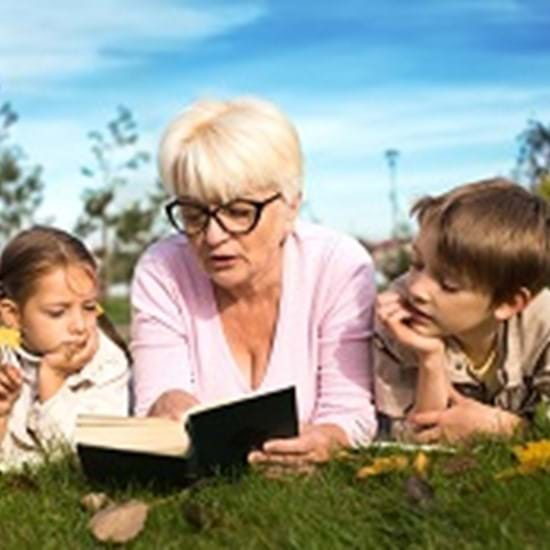
Choosing “Just Right” Books for Beginner Readers!

Written by: Julie Provencher
What kind of books should be offered to a beginner reader? There you are, standing in your local bookshop or library, wondering what to pick! There are so many amazing choices and this fun activity now suddenly feels like a complicated task. Will this book interest my 6-year old? Is it too hard...or maybe too easy? What a predicament! As a grade one and two teacher, and with two boys of my own, allow me to suggest the following little hand guide to help you in your selections.
What kind of reading time do you plan to have?
Will your child be reading the book on his own? Will you be reading together, or will you be reading to your child? The reading level of the book you chose will vary based on whether you or he is doing the reading. Let’s look into these differences more closely.
Consider your child's interests when reflecting on your choice of books.
|
Who will be doing the reading? |
Independent reading – child aged 6-7 years The child reads the book alone in the presence of an adult, who encourages and motivates. |
Child/parent shared reading The child and adult both read together. They take turns reading a different sentences or pages. |
Parent reading to a child out loud The book is read out loud by an adult. The child listens and reflects on what is being read. |
|
Benefits |
The child learns to recognize words frequently used in the book (the, to, a, if, etc.) The child associates letters to their sounds (e.g.: the letter P makes the sound p.p.p.) The child may also combine syllables (num•ber) and read short sentences, gradually developing his reading skills. Favour several short reading periods rather a single prolonged one. This task is very mentally demanding for children. They are so busy deciphering the words on the pages that they don’t always understand everything they’re reading. It’s all very normal. Practice will increase their understanding, speed and confidence. |
Shared reading should be encouraged at any age! The trick is to give the child a realistic challenge. In addition to honing your child’s reading skills, this is a great opportunity to reflect and discuss on the story itself. As children don’t have to read everything, they can concentrate more easily on what they understand. |
Reading out loud to children develops their love of reading! Most children love to be read to. They hear new words that they will eventually read and understand on their own. This activity also contributes to expanding vocabulary. The child is led to reflect on the information he assimilates, to question and make connections in the story. In sum, the child’s mind is very engaged even if he isn’t doing any reading. |
|
Choose books based on your child's interests. Reading time is a great opportunity to discover great Canadian authors with your child. |
Beginner-level books should be very short and simple (only a few words or a single sentence per page). Sentences should be predictable: There was a blue monster. There was a red monster. There was green monster. The words should be easy and repeated frequently. For the book to be level-appropriate, studies show that the child should know 95% of the words. The words should be easy and repeated frequently. Choose books that represent a reasonable and realistic challenge. |
Book pages can have more content as the parent reads part of it. The wording can also be a little more advanced because the adult can explain harder passages or problematic areas in the storyline, or help with difficult words. This type of reading activity is a great opportunity to talk about the book with your child. |
Choose books of various difficulty levels since the parent reads with the child. Choose books of various difficulty levels since the parent reads with the child. It’s important to refer to the illustrations and engage the child through discussion. For example, by asking questions like: “What do you think will happen?” or “Why do you think the little girl is sad?” Choose books of various difficulty levels.
|
|
Reading Tips |
Practice! Reading the book several times is a must to improve the child’s skills. You can encourage and motivate your child by saying things like: - “Wow, you’re such a great reader, go read it again to daddy!” - “Would you like some Skype time with grandma to read your book to her, I’m sure she’d love it.” |
It’s good to encourage the child to read part of page or sentence. For example, reading the last part of a sentence, reading titles, dialogues, narration, etc. Mix it up and have fun. For older age groups, take turns reading chapters out loud and talk about these after. |
Not all children like fairytales; some will prefer informative reading material. There are a number of great collections on fascinating subjects (e.g.: volcanoes, cars, castles, etc.) Read diversified material to your children. |
To conclude, independent readers should have access to books that correspond to their reading level. However, even if your kids can read on their own, it’s still important to continue reading to them. The activity nurtures their general love of reading and exposes them to advanced materiel, inciting them to understand and read such material on their own someday.
“What children can do with the assistance of others might be in some sense even more indicative of their mental development than what they can do alone.”
(Vygotsky, Mind in Society)


